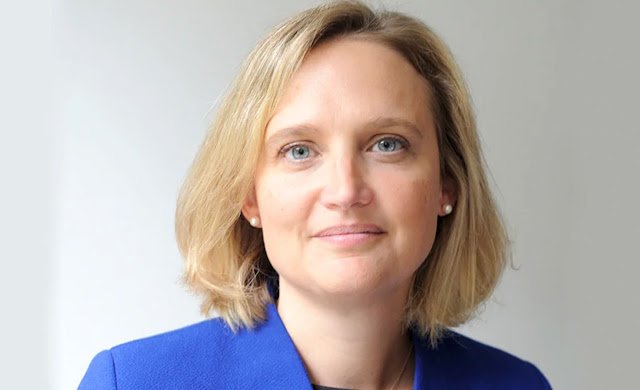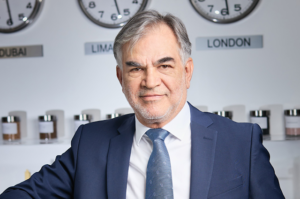| Mr Dimitri Fafalios, Chairman at INTERCARGO |
An interview with Mr. Dimitrios Fafalios, Chairman at INTERCARGO.
Is the goal of Zero Emissions really tangible?
To achieve the goal of Zero Emissions in Shipping by 2050, it is fundamental that governments, legislative parties and all stakeholders understand that decarbonisation of the shipping sector is a whole system challenge and does not only affect the ship, while the majority of the investments needed are for land-based infrastructure and low carbon fuel production.
Furthermore, regulators are faced with the huge task of not only decarbonising a world fleet made up of thousands of vessels but also understanding the two main maritime economic models. Shipping is primarily divided into the liner model and the tramp model. For regulations to be equitable and effective, knowledge of all of shipping’s sectors and models is necessary. The dry bulk carrier fleet mainly follows the tramp model.
In addition, the shipping sector will only be in position to deliver the target of net-zero CO2 emissions by 2050 with acceleration in the commercial development of relevant technologies, the availability of fuels and propulsion systems and of the necessary related infrastructure. Shipyards need also to play their significant role and develop ship designs and integrate the technology that can be practically and safely implemented onboard.
Strengths, opportunities, many weaknesses, and threats
Shipping is considered to be one of the most difficult sectors to decarbonize.
It is worth highlighting that a dry bulk carrier’s Greenhouse Gas (GHG) emissions are amongst the lowest per tonne-mile of cargo carried and bulk carrier vessels represent one of the most economical and thereby environmentally friendly transport modes on earth. More particularly, taking the year 2008 as a reference, the most significant carbon intensity reduction was achieved by bulk carriers, where the overall EEOI and AER in 2018 was around 38% and 31% lower. The trends in overall EEOI of oil tankers, container ships and general cargo ships decreased by 25-26% in 2018 compared with year 2008.
Despite the above achievements the abatement cost curve of CO2 is steep as we move beyond 50% de-carbonization and the dry bulk tramp trade is extremely challenging compared to liner shipping.
An important trade characteristic of the bulk segment is that more than 65% of the approximately 13.000 bulk carrier ships are engaged in the tramp trade and are supporting regions and countries with poor infrastructure characterized by ships sailing in irregular trade patterns, rather than along fixed routes, and calling various ports around the world. Therefore, the “Green Corridors” concept although may be beneficial for some type of vessels is not suitable for the majority of bulkers trading. Dry bulk shipping needs “Green Ports” globally and INTERCARGO has invited initiatives promoting Green Ports and the concept of Green Hubs as fundamentally relevant for the tramp sector.
It is difficult to imagine that alternative drop-in fuels will be available in all ports globally in the short and medium term. A multi-fuel “pathway” for the bulkers’ tramp shipping model is much more challenging than other segments. Furthermore, the tramp shipping model does not easily allow for Operational optimization leading to further reductions of the GHG Intensity.
On top of the aforementioned challenges, due to irregular trade patterns, we also need to add that the high CAPEX cost of new technologies (i.e. wind assisted propulsion) is much higher proportionately, versus other sectors for the bulker fleet, resulting to Return on Investment (ROI) and business cases that may not be very attractive.
Most importantly the human element and the shortage of skilled seafarers will continue to be one of the biggest challenges for many operators. Crew competitiveness for most bulker operators (not owning LNG/tankers etc.) that do not have adequate crew experience with alternative fuels yet, may prove to be one of the most significant threats towards the decarbonization pathway especially as alternative fuels are becoming more complex to handle on board.
Based on recent studies as many as 800,000 seafarers will require additional training by the mid-2030s to enable the shipping industry to transition towards alternative low- and zero-carbon fuels and technologies. Supporting the 1.9 million-strong seafarer workforce, to transition to a net zero shipping industry, is hopefully recognized and well encompassed by the ‘mapping a just transition for seafarers’ action plan recently launched at COP 27.
What are the zero emissions solutions and what is the fuel of the future?
The majority of bulk carrier owners eagerly await new fuels as long as these fuels are safe, promptly available, and permitting a sustainable business model.
In order to assess the maturity and potential adoption of the future fuels, we need to take into consideration various parameters: the technology readiness on bord, OPEX & CAPEX requirements of the fuel, storage and safety requirements further to the crew competence that has been mentioned. The global availability, bunkering infrastructure and safety restrictions for urban areas are of course of significant importance. Moreover, the production methods, taking into account the Life Cycle Emissions of each new fuel both downstream and upstream, as well as infrastructure needs are also to be evaluated.
Community readiness is another important driver of change that also needs to be in consideration along with how other sectors will decarbonize. While nuclear Molten Salt Reactors technology for maritime use is gaining ground and evolving, whether society is ready to accept such ships sailing along their coastline or entering ports is to be considered
Finally, we need to consider that shipping will be competing with other industries that are also trying to decarbonize, i.e aviation that has stated it aspires to achieve net zero carbon by 2050, bringing air transport in line with the Paris agreement to limit global warming to 1.5°.
Apparently drop-in biofuels for deep-sea shipping would be in high demand but most probably not available in sufficient quantities and locations globally. Moreover, the GHG reductions of E-fuels which are produced using green hydrogen and CO2, i.e e-hydrogen, e-methane and e-ammonia or liquids like e-methanol or e-diesel, depend entirely on abundant renewable electricity, a prerequisite we question since the supply of renewable electricity is forecasted to remain in high demand in the future.
How governments, legislative parties and institutions can address the situation?
Further to the Revised IMO GHG Strategy and the Mid- Long-Term Measures that will be finalized in the next MEPC 80 in July this year, work is progressing with regards to the Safety of Alternative fuels. The IMO Sub-Committee on Carriage of Cargoes and Containers is currently developing guidelines to ensure the Safety of Ships using alternative fuels, and the relevant questions are to be duly considered by IMO’s Maritime Safety Committee.
More specifically, Interim Guidelines for the Safety of Ships using Hydrogen as Fuel and Ammonia as Fuel are expected to be finalised in 2023 and 2024 respectively. The Guidelines for ships using Low-flashpoint oil fuels (including biofuels) are also to be finalised in 2024. Discussions transposing the Interim guidelines for the safety of ships using methyl/ethyl alcohol as fuel into mandatory instruments are to be finalized in 2025 and the discussion for the development of mandatory instruments regarding Fuel Cells will start in 2024.
Lifecycle GHG intensity of marine fuels development is essential to clarify the new fuel roadmap. There is too much confusion regarding “green credentials” of LNG, Blue Fuels, etc whilst stakeholders (World Bank, EU etc) are still debating if LNG is a suitable transition fuel.
Hopefully in IMO there will be significant progress in the development of the draft guidelines on lifecycle GHG intensity of marine fuels (draft LCA guidelines) including the development of methodologies that allow for its calculation. The development of guidance for third-party verification and certification schemes for alternative fuels is also expected. But herein lies a fundamental question. Why should vessels be responsible for Well-to-Wake emissions? What influence do they have on Well-to-Tank emissions?
What is the best strategy towards this goal?
In conclusion to build a realistic pathway and address the challenges, all stakeholders in the maritime venture should bear the costs of the decarbonisation transition and play their role. This is not just shipowners and operators, it is charterers, fuel suppliers, ports, cargo shippers and cargo receivers, while governments need to develop land-based infrastructure to support the low carbon fuel production in sufficient quantities.















